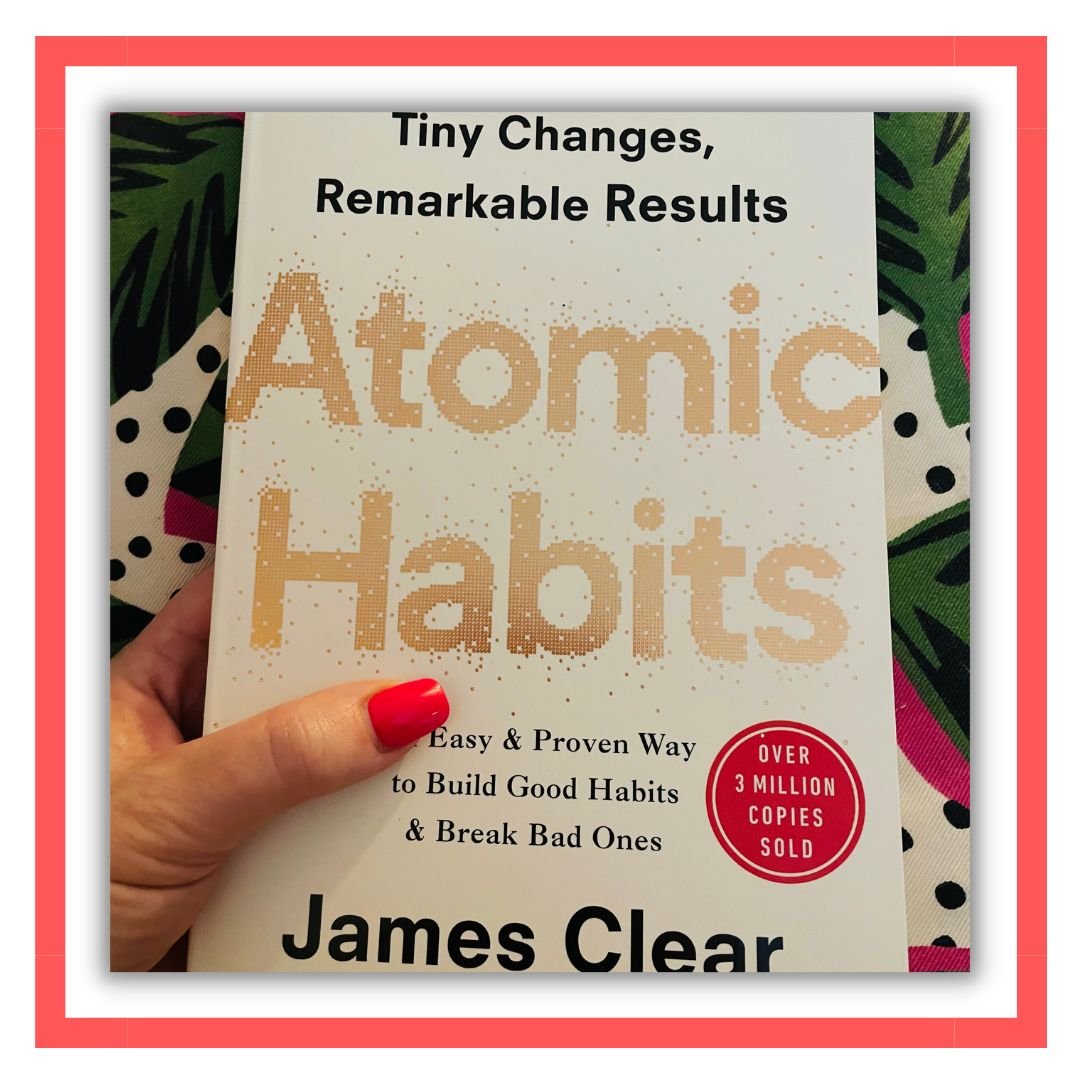Atomic Habits for learning English
This week, in classes and on social channels we’ve been looking at the subject of habits. In conversations a few students have mentioned the importance of James Clear’s groundbreaking book, Atomic Habits. This book was first published in October 2018 and since then it has become an international bestseller, selling over 10 million copies in over 50 countries worldwide.
So, what’s all the fuss about?
Put simply, the book explores the science of habit formation and offers actionable strategies for positive change. Perhaps one of the reasons it has been such a success is that its approach resonates with many people because its ideas are simple to understand and easy to implement and can be applied to any area of a person’s life.
The book emphasizes the importance of small, consistent changes to one's habits in order to achieve long-term goals. It argues that by focusing on making small improvements each day, one can ultimately make significant progress over time. Atomic Habits offers actionable steps to help the reader set goals and succeed in attaining them.
So in this post we’re going to look at how some of the key principles from the book can be applied to language learning and how students may benefit from introducing some of these ideas into their study.
Building Consistency
Language acquisition is not a sprint; it's a marathon. Consistency is key. In Atomic Habits, James Clear emphasises the power of small, consistent actions. For language learners, this means dedicating a little time each day to studying and practicing the target language. Whether it's reading, writing, listening, or speaking, forming daily habits, even for just a few minutes, can significantly boost language proficiency over time.
“The first mistake is never the one that ruins you. It is the spiral of repeated mistakes that follows. Missing once is an accident. Missing twice is the start of a new habit.
”
Creating an Identity-Based Habit
In the book Clear introduces the concept of identity-based habits as a powerful driver of behavioral change. This notion revolves around the idea that lasting habits are not just about what you do, but about who you become in the process. For language learners, this means not only engaging in daily language-related activities but also adopting the identity of a language enthusiast. By seeing yourself as a "language learner" or a "polyglot in the making," you instill a sense of pride and commitment that goes beyond the immediate task. Your identity then becomes intertwined with the habit of learning a new language, making it a more integral part of your life and self-concept. When you think of yourself as someone who is on a journey to becoming multilingual, the habits that reinforce this identity become easier to maintain and incorporate into your daily routine.
As a side note, I always encourage my students to refer to themselves as English speakers, because that’s exactly what they are doing in our conversation classes.
“The ultimate form of intrinsic motivation is when a habit becomes part of your identity. It’s one thing to say I’m the type of person who wants this. It’s something very different to say I’m the type of person who is this.
”
Progress Tracking
One of the most valuable aspects of Atomic Habits is the idea of tracking progress. Language learners can adapt this concept by maintaining a journal or using language learning apps to monitor their daily achievements. By seeing the gradual improvements and small victories, learners can stay motivated to continue their language journey.
Some of my students have incorporated journaling into their daily English routine. Others record themselves speaking once a week as a way to track their progress over time.
Implementation Intentions and Environment Design.
Another crucial concept from Atomic Habits that language learners can benefit from is the idea of implementation intentions. Implementation intentions involve creating a specific plan for when and where you will perform a habit. When applied to language learning, this means setting clear and precise intentions for your study sessions. For example, instead of vaguely planning to "study English later," you can say, "I will study English for 30 minutes at 7 PM in my study corner." This level of detail helps eliminate ambiguity and procrastination, making it easier to follow through with your language-learning habits.
Clear suggests that the environment plays a crucial role in shaping our habits. You can apply this idea by creating a conducive language-learning environment. This might involve surrounding yourself with language resources, setting up a comfortable study space, or even changing your device settings to the target language. Such environmental adjustments can make language learning a seamless part of your daily life.
By creating a concrete roadmap for your language practice, you increase the likelihood of sticking to your daily routine and, ultimately, achieving your language learning goals. Implementation intentions are like a GPS guiding you towards your destination of linguistic proficiency, ensuring that you stay on track.
“It is not necessary to change a person in order to change their behavior. Just change their environment.
”
The Two-Minute Rule
The "Two-Minute Rule" from Atomic Habits encourages starting with tasks that take just two minutes or less. For language learners, this means that even on the busiest of days, you can engage in language practice. Spend two minutes reviewing vocabulary, listening to a short podcast, or writing a brief journal entry. This simple rule makes language learning feel less overwhelming and more achievable.
Accountability and Social Support
Clear emphasizes the importance of accountability in habit formation. Language learners can leverage this by sharing their goals with friends or joining language learning communities and challenges. These platforms provide the support and motivation needed to stay committed to your language learning habits.
Overall, Atomic Habits offers a wealth of insights and practical advice that can transform the language learning experience. By applying the principles mentioned above and more, language learners can develop effective and sustainable habits for mastering a new language. In the end, it's not just about learning a language; it's about becoming the kind of person who is capable of continuous growth and self-improvement.


